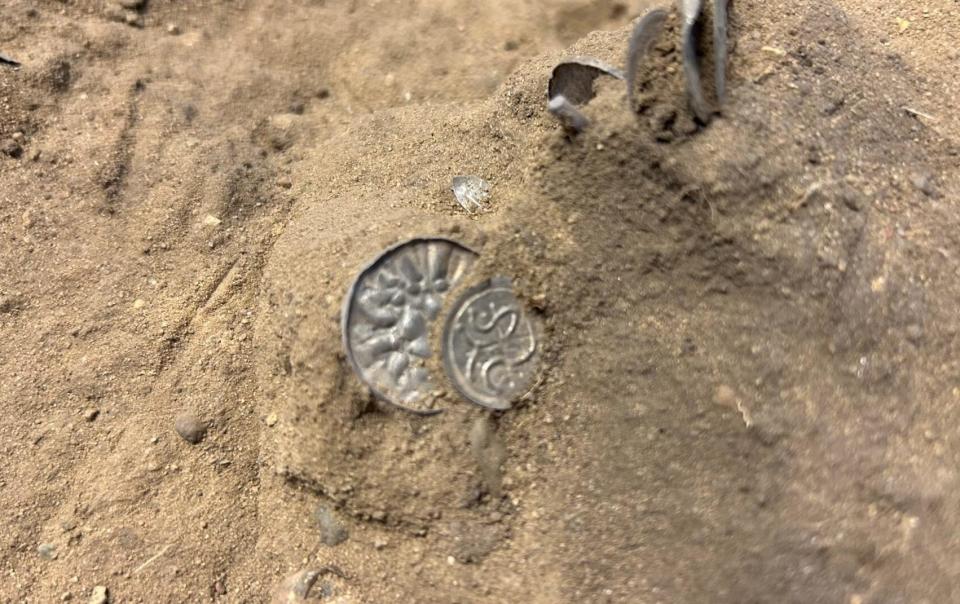1,000-year-old Viking coins unearthed by young girl with metal detector
- Oops!Something went wrong.Please try again later.
Nearly 300 silver coins believed to be more than 1,000 years old have been discovered near a Viking fortress site in northwestern Denmark, a museum said Thursday.
The rare trove -- lying in two spots not far apart -- was unearthed by a young girl who was metal detecting in a cornfield last autumn.
"A hoard like this is very rare," Lars Christian Norbach, director of the North Jutland museum where the artefacts will go on display, told AFP.

The silver coins were found about five miles from the Fyrkat Viking ringfort near the town of Hobro. Notably, because they both have cross inscriptions, they are believed to date back to the 980s, the museum said.
The trove includes Danish, Arab and Germanic coins as well as pieces of jewellery originating from Scotland or Ireland, according to archaeologists.
Norbach said the finds were from the same period as the fort, built by King Harald Bluetooth, and would offer more insight into the history of the Vikings.
"The two silver treasures in themselves represent an absolutely fantastic story, but to find them buried in a settlement just eight kilometers from Harald Bluetooth's Viking castle Fyrkat is incredibly exciting," museum archaeologist and curator Torben Trier Christiansen said in a statement.
King Harald's earlier coins did not feature a cross, so he likely introduced the cross coins as propaganda in connection with his Christianization of the Danes, the museum said.

There could be a link between the treasure -- which the Vikings would bury during wars -- and the fort which burned down during the same period, Norbach said.
Archaeologists have said they will continue digging next autumn after the harvest.
They hope to find the burial sites and homes of the troves' one-time owners.
The Vikings believed that burying their treasure allowed them to find it again after death.
The artefacts will go on public display from July at the Aalborg Historical Museum.
The girl who made the discovery is due to receive financial compensation, the amount of which has not been made public.
Millions of older Americans unprepared for retirement

